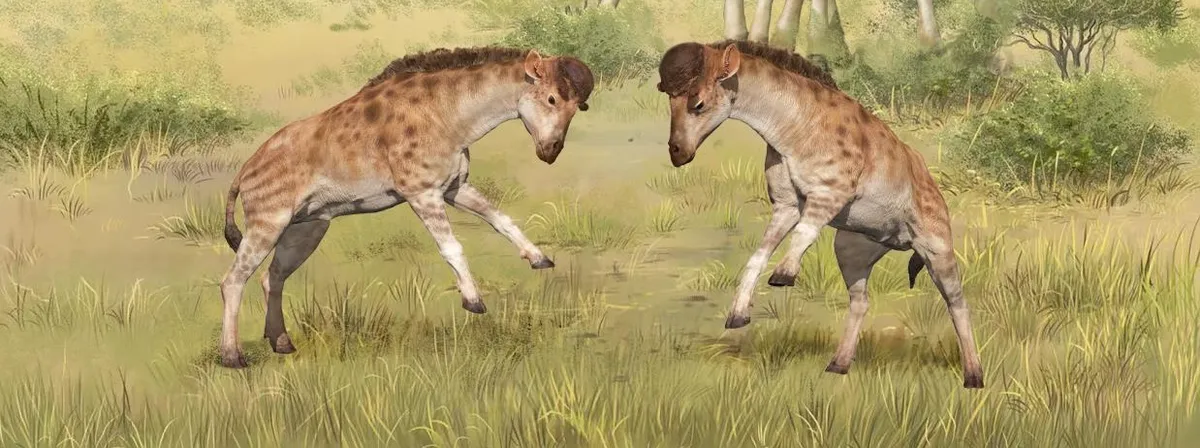It is widely thought that giraffes evolved to have such long necks as this allowed them to feed on high foliage that other animals found difficult to reach. However, it may actually have been competition for mates that gave them this unique feature, researchers at the Institute of Vertebrate Paleontology and Paleoanthropology of the Chinese Academy of Sciences have found.
During courtship competitions, giraffes fight by whipping their heavy skulls topped with hard horn-like ossicones into their opponents using their two-to-three-metre-long necks.
Animals with longer necks are able to throw more powerful headbutts, making them more likely to win fights, and are also seen as being higher up the social hierarchy.
Now, a 17-million-year-old fossil of Discokeryx xiezhi, an ancient relative of modern giraffes, found in Junggar Basin, Xinjiang, western China, suggests that this behaviour may have led to the animals evolving their trademark long necks.
Though its neck is much shorter than that of modern giraffes, analysis of the fossil shows that Discokeryx xiezhi had an incredibly complex series of joints between its head and spine and a hard disc-shaped ossicone on its head that made it particularly adapted to high-speed head-to-head impact.

They found this structure was far more effective at absorbing impact than that of modern animals that are also adapted to heavy head impact such as musk oxen.
The researchers believe that the evolution of this unusual skeletal structure was driven by headbutting courtship competitions. This means it was likely to also be true for the evolution of the unique neck and head anatomy seen in modern giraffes, they say.
"Both living giraffes and Discokeryx xiezhi belong to the Giraffoidea, a superfamily. Although their skull and neck morphologies differ greatly, both are associated with male courtship struggles and both have evolved in an extreme direction," said the study's first author Wang Shiqi.
The researchers believe that during the emergence of the genus Giraffa seven million years ago, the direct ancestors of modern giraffes developed a way of fighting by swinging their necks and heads into one another.
Along with sexual selection, this behaviour led to the extreme elongation seen in modern giraffes over the following two million years. This would also have made them particularly well-suited for the niche of feeding on high foliage as a consequence, they say.
Read more about giraffes: